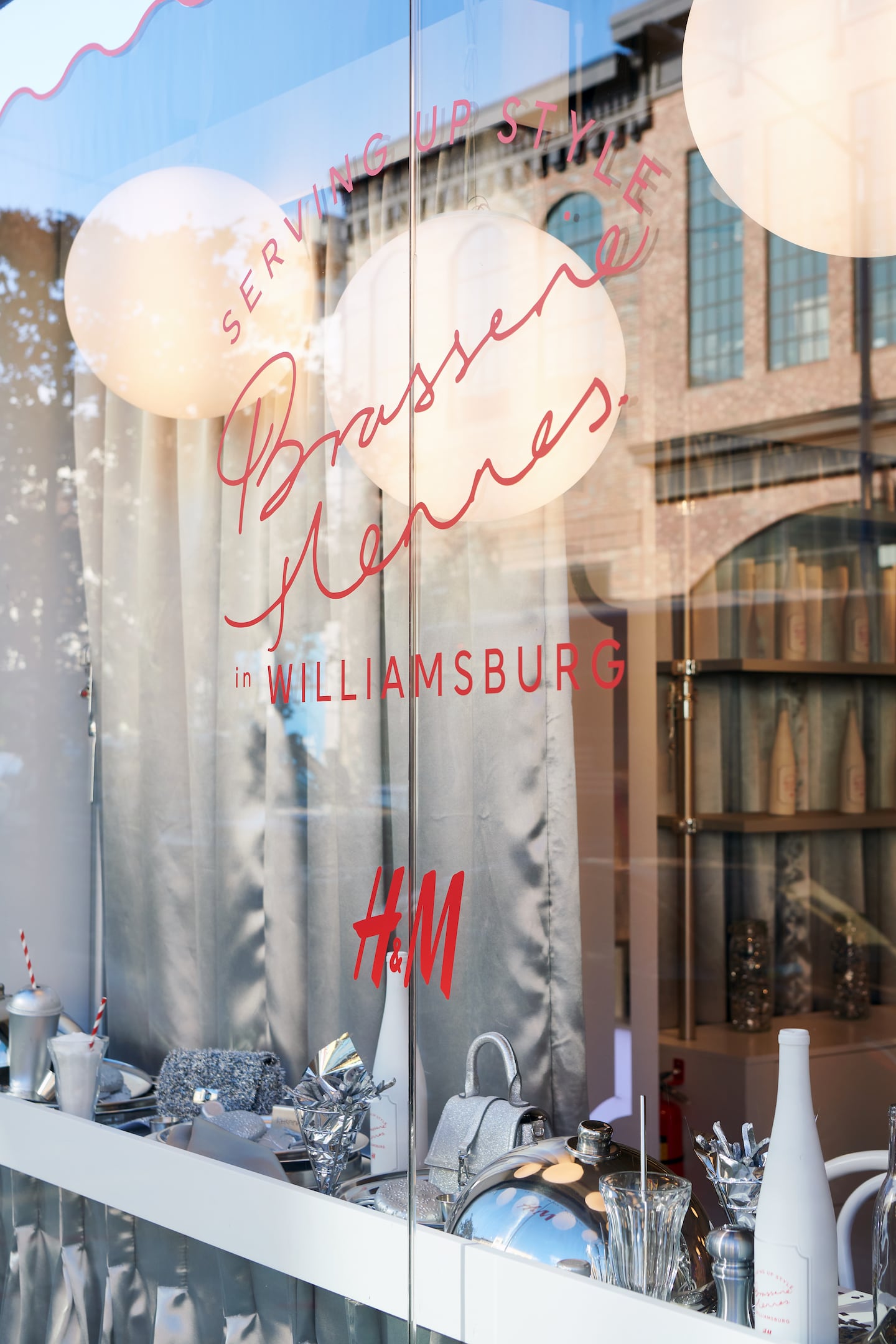
The Business of Fashion
Agenda-setting intelligence, analysis and advice for the global fashion community.

Agenda-setting intelligence, analysis and advice for the global fashion community.

Shoppers are used to walking into an H&M store and seeing endless clothing racks under fluorescent lights.
But the Swedish mega-retailer took a different approach with its year-long Williamsburg retail experiment. H&M’s new 7,000 sq. ft store, which opens Nov. 18, doesn’t look like an H&M — and that’s the point. Instead of a deluge of merchandise, on the floor is a limited assortment of shoes, sweaters and dresses lit up by an interactive snowflake light projection. The retailer is hoping a curated, event and stylist-centric store will help elevate its image and brand amongst the fashion set.
“What we’re aiming to achieve in general is to target a fashion-forward young customer,” said Linda Li, head of customer activation and marketing for H&M Americas.
Though H&M has toyed with a number of retail formats including a high-tech boutique in Berlin, historically, the retailer’s biggest in-store focus has been on maximising transactions.
ADVERTISEMENT
Instead, the Williamsburg location will emphasise increasing consumer engagement and order size, with store associates trained in styling and dressing rooms with “Clueless”-esque RFID-enabled mirrors that suggest additional items to users alongside their reflection.
The store will be based around visual themes H&M is calling “chapters” and merchandising edits that will shift every four to 12 weeks. The first edit, based on its holiday campaign “Brasserie Hennes,” features restaurant-inspired setup in-store. As well, the retailer hopes to use the space as a centre for events like VIP activations and dinners, or stay open late with DJ sets for shoppers.
H&M joins a growing number of fashion brands that have flocked to the Brooklyn neighbourhood with experience-focused or small-format stores, including Urban Outfitters, J.Crew and Levi’s in the early 2010s and more recently Patagonia, Ganni, Nike, Glossier and Hermes. It will play off the neighbourhood by bringing yet-to-be confirmed local merchants, makers and partners in, first, through a holiday market from Dec. 1 to Dec. 30.
“There’s a reason why a lot of players are entering [Williamsburg]: it’s about that customer base — it’s about the neighbourhood … the community that has popped up in Williamsburg is just such an interesting, eclectic, unique mix,” said Li.
The move comes as brands big and small remap their brick-and-mortar strategies in a post-pandemic environment and simmering e-commerce boom.
“The role of the store is changing. And I think every single brand — it doesn’t matter if you’re a brick and mortar, traditional brand, it doesn’t matter if you’re a digital first brand — You’re thinking about what the role of the store is,” said Li.

Joan Kennedy is Editorial Associate at The Business of Fashion. She is based in New York and covers beauty and marketing.
The British musician will collaborate with the Swiss brand on a collection of training apparel, and will serve as the face of their first collection to be released in August.
Designer brands including Gucci and Anya Hindmarch have been left millions of pounds out of pocket and some customers will not get refunds after the online fashion site collapsed owing more than £210m last month.
Antitrust enforcers said Tapestry’s acquisition of Capri would raise prices on handbags and accessories in the affordable luxury sector, harming consumers.
As a push to maximise sales of its popular Samba model starts to weigh on its desirability, the German sportswear giant is betting on other retro sneaker styles to tap surging demand for the 1980s ‘Terrace’ look. But fashion cycles come and go, cautions Andrea Felsted.